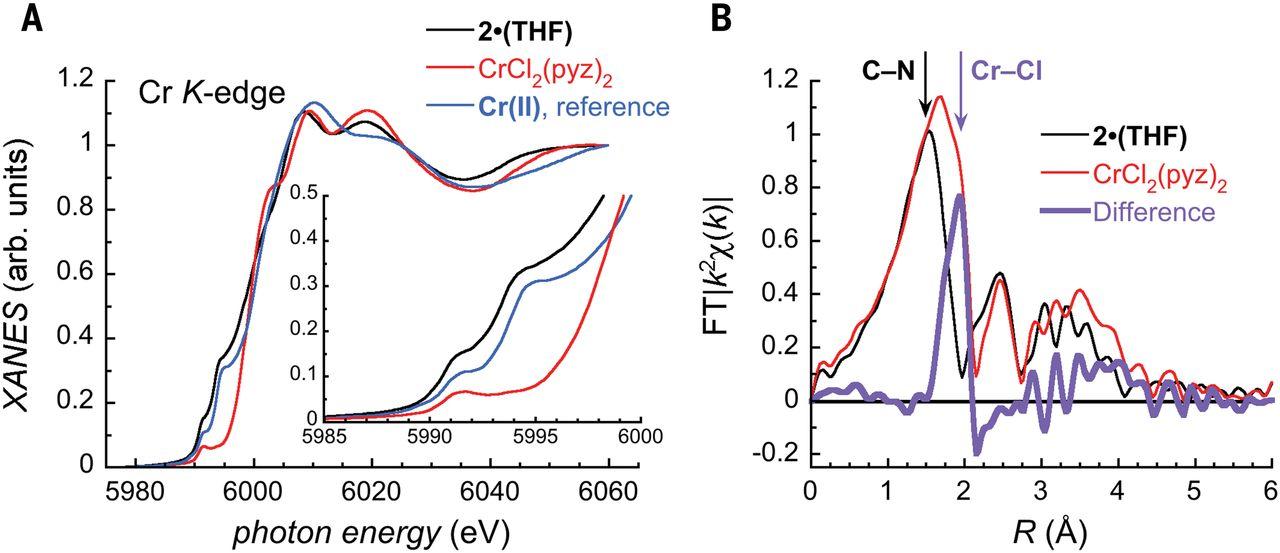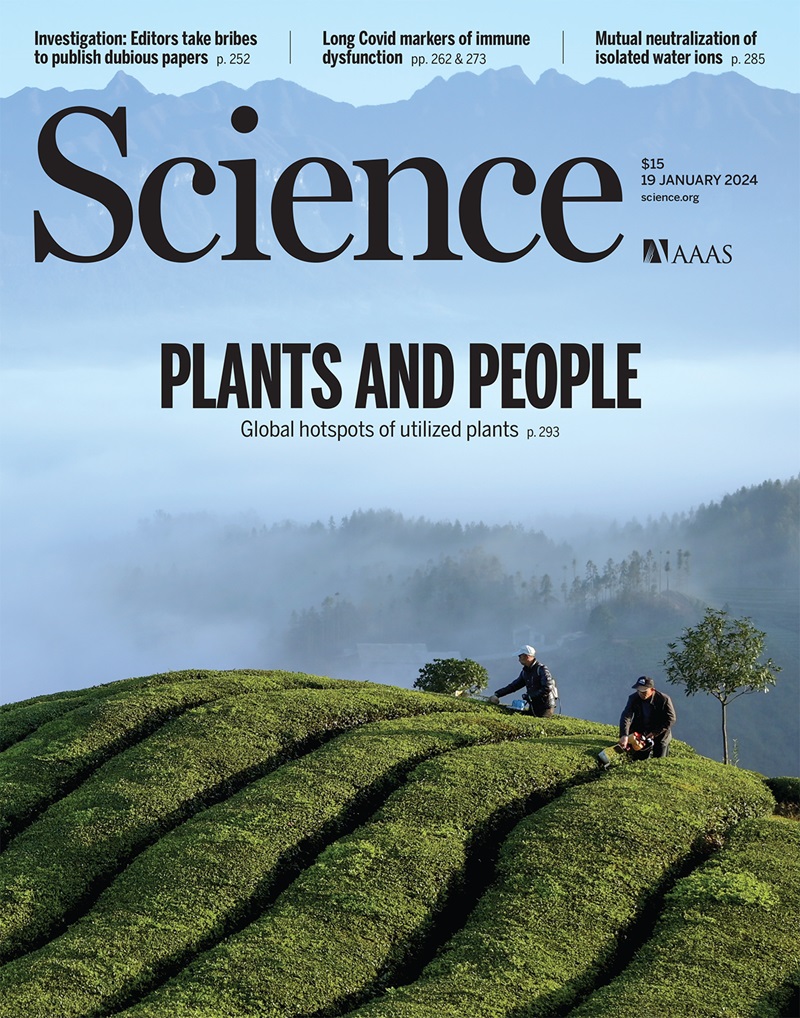矫顽力大、有序温度高达 242°C 的金属有机磁体
IF 44.7
1区 综合性期刊
Q1 MULTIDISCIPLINARY SCIENCES
引用次数: 60
摘要
由无机材料(如氧化物、稀土基和金属间化合物)制成的磁体是现代技术应用的关键组成部分。尽管这些无机磁体在广泛的应用领域取得了相当大的成功,但也存在一些缺点,包括制造成本高昂、某些组成元素的可用性有限、密度高以及化学可调性差。下一代磁体的设计策略依赖于丰富的金属离子和廉价的有机配体的多功能配位化学。按照这种方法,我们报告了通过对结合了铬金属离子和吡嗪结构单元的预组装配位网络进行后合成还原,从而普遍、简单、高效地合成了基于分子的轻质磁体。这种金属有机铁氧体磁体的临界温度高达 242°C,室温矫顽力为 7500 欧姆。本文章由计算机程序翻译,如有差异,请以英文原文为准。

Metal-organic magnets with large coercivity and ordering temperatures up to 242°C
Magnets derived from inorganic materials (e.g., oxides, rare-earth–based, and intermetallic compounds) are key components of modern technological applications. Despite considerable success in a broad range of applications, these inorganic magnets suffer several drawbacks, including energetically expensive fabrication, limited availability of certain constituent elements, high density, and poor scope for chemical tunability. A promising design strategy for next-generation magnets relies on the versatile coordination chemistry of abundant metal ions and inexpensive organic ligands. Following this approach, we report the general, simple, and efficient synthesis of lightweight, molecule-based magnets by postsynthetic reduction of preassembled coordination networks that incorporate chromium metal ions and pyrazine building blocks. The resulting metal-organic ferrimagnets feature critical temperatures up to 242°C and a 7500-oersted room-temperature coercivity.
求助全文
通过发布文献求助,成功后即可免费获取论文全文。
去求助
来源期刊

Science
综合性期刊-综合性期刊
CiteScore
61.10
自引率
0.90%
发文量
0
审稿时长
2.1 months
期刊介绍:
Science is a leading outlet for scientific news, commentary, and cutting-edge research. Through its print and online incarnations, Science reaches an estimated worldwide readership of more than one million. Science’s authorship is global too, and its articles consistently rank among the world's most cited research.
Science serves as a forum for discussion of important issues related to the advancement of science by publishing material on which a consensus has been reached as well as including the presentation of minority or conflicting points of view. Accordingly, all articles published in Science—including editorials, news and comment, and book reviews—are signed and reflect the individual views of the authors and not official points of view adopted by AAAS or the institutions with which the authors are affiliated.
Science seeks to publish those papers that are most influential in their fields or across fields and that will significantly advance scientific understanding. Selected papers should present novel and broadly important data, syntheses, or concepts. They should merit recognition by the wider scientific community and general public provided by publication in Science, beyond that provided by specialty journals. Science welcomes submissions from all fields of science and from any source. The editors are committed to the prompt evaluation and publication of submitted papers while upholding high standards that support reproducibility of published research. Science is published weekly; selected papers are published online ahead of print.
 求助内容:
求助内容: 应助结果提醒方式:
应助结果提醒方式:


